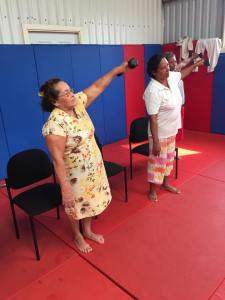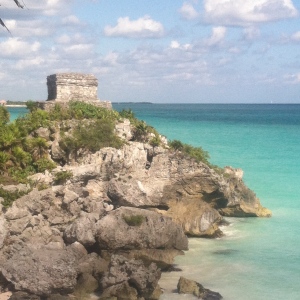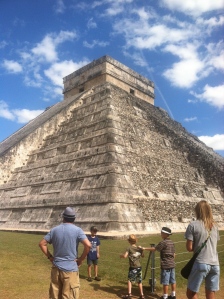I know I’ve been posting lots of vacation-y pictures, but I’m also working on a project for my internship at FIMRC. Amanda and I are organizing a series of exercise and cooking classes for the diabetics in the community. Most of the diabetics in the community are older women who have Type II diabetes, and the regulars who come to our classes have taken on the role of our Nicaraguan grandmothers.
For the exercise classes, we plan routines of geriatric and easily-modifiable exercises, most of which can be done in a chair. We also do lots of stretches, and we always end with a zumba routine. They love using light weights and ab exercises. Last week we had a yoga instructor come to do a class with them, and they were game to try everything.
The cooking classes involve a lunch cooked by one of the other FIMRC host moms. She makes healthy food with minimal salt and oil, and then we talk about the techniques she used to cook and how they can implement them in their homes. Because of their lack of resources here, its difficult to change the food they use to cook (rice and beans for days), so we try to teach sustainable healthy techniques. The idea with both these classes is that even though they will end after we leave, hopefully what we teach will be sustainable and the women will continue to use the exercises and techniques we taught. Again because of the lack of resources, they don’t have regular access to insulin or other medication, so they have to use other methods to control their blood sugar.
But the best part of the project is the women (and one man) who we’ve met through their participation. One lady in particular, Doña Francisca, has come to every single exercise class. She always brings us presents: homemade bread and candy, honey, rosquillos (kind of like Nicaraguan cheese-its), fruit, and once for me, a bar of soap. The women always give us lots of hugs, and they keep coming back, so hopefully they’re enjoying it. It will be hard to say goodbye after our last class this week.


